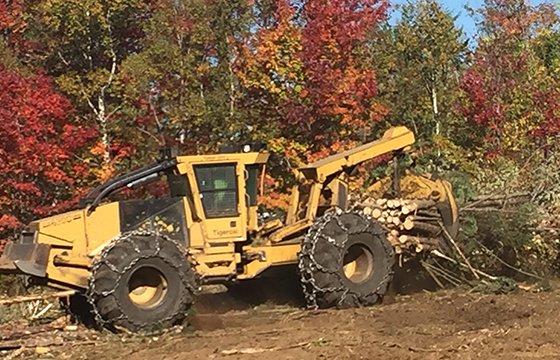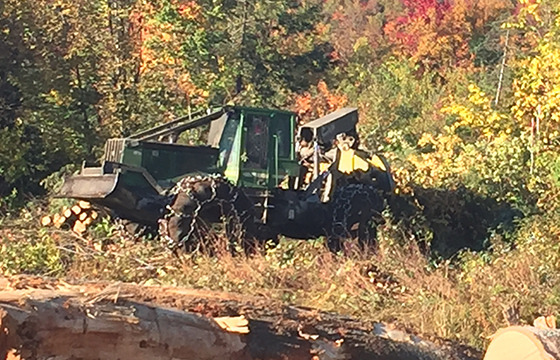New York Looks at Logging Infrastructure

In the winter and spring of 2016, wood markets in the Adirondack Region of New York were robust. This part of Upstate New York has two pulp and paper mills and numerous hardwood sawmills that have long anchored the region’s markets. In addition, a new biomass plant was starting operations, wood pellet manufacturers were struggling to keep up with demand, pulp mills from the north and south were actively buying wood in the region, and firewood markets were strong. All of this demand was great for loggers, but the supply infrastructure was struggling to keep up, and mills were worried about getting enough wood.

What a difference a couple years makes. While today the region’s pulp mills and sawmills remain steady consumers, almost everything else has changed. Low oil prices and warm winters have reduced demand for wood pellets and firewood. Biomass electricity in the region is facing challenging economics, and operating below capacity. Pulp mills to the north and south seem to have enough wood locally, and aren’t the buying presence they once were.
In the middle of this market swing, the state’s forest industry worked with the Adirondack North Country Association to look at the region’s wood supply and logging infrastructure. This report, Northern New York’s Forests: Timber Supply, Workforce, Infrastructure & Markets, takes an objective look at the opportunities and challenges of wood supply in this region, and will help companies, local leaders and state officials work collaboratively to support and grow the state’s forest industry.
Seeking to answer a fairly simple question – Does the region have enough logging and trucking infrastructure to support the forest products manufacturing base? – led to two simple answers.
Yes. And no.

After interviews with dozens of suppliers and consumers in the region, as well as an inventory of people and equipment in the region, it is clear that the supply chain supports the current demand. In fact, some mills had suppliers on quota this winter, so there may be slight overcapacity. That noted, a little uptick in the other consumers – wood pellets, biomass electric, mills from other regions – could quickly strain the supply chain.
All of that noted, the research uncovered a much bigger concern. A significant portion of the region’s loggers have plans to leave the industry in the next +/-5 years. Many are of the age where this is not surprising, and are on their last set of equipment. According to those interviewed, when their current equipment is ready for replacement, so are they. When this happens, there will be a big gap in wood supply, and the time to start addressing the challenge is now.
Fortunately, the Adirondacks is home to Paul Smith’s College, which not only has a forestry program but recently began a unique and innovative program targeted at training new mechanized loggers. Some mills are also thinking about their long-term wood supply, and identifying those loggers well positioned to expand and grow operations over the next five years. Wood using mills are working with these loggers to help them grow, with some going as far as financing equipment necessary to ensure a reliable and cost-stable supply of wood.
This evaluation helped the forest industry in New York’s Adirondack Region take a clear look at wood supply and logging infrastructure, and evaluate opportunities to make certain that forest industry remains an important part of the area’s future. The entire report can be downloaded here.
https://adirondack.org/NorthernForestsFull
Disclosure: Innovative Natural Resource Solutions LLC, a firm that FRA’s Northeast Region Coordinator Eric Kingsley is a partner in, conducted this assessment for the Adirondack North Country Association.


